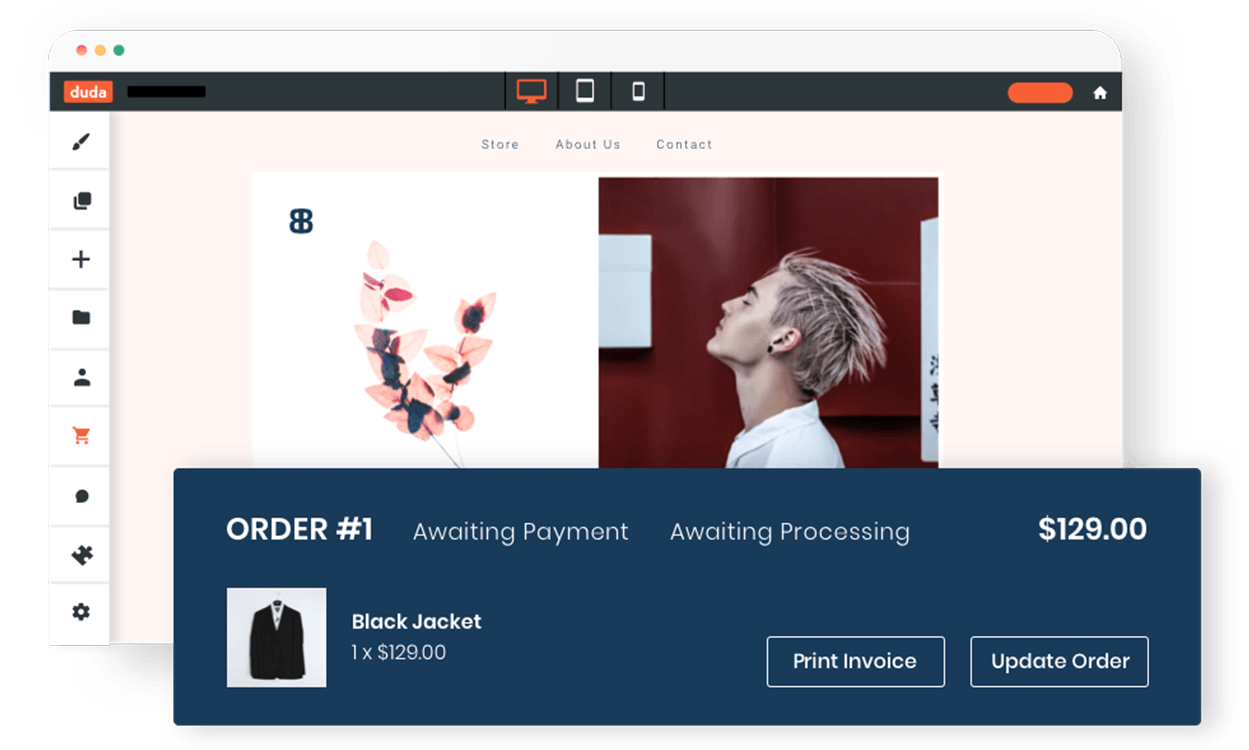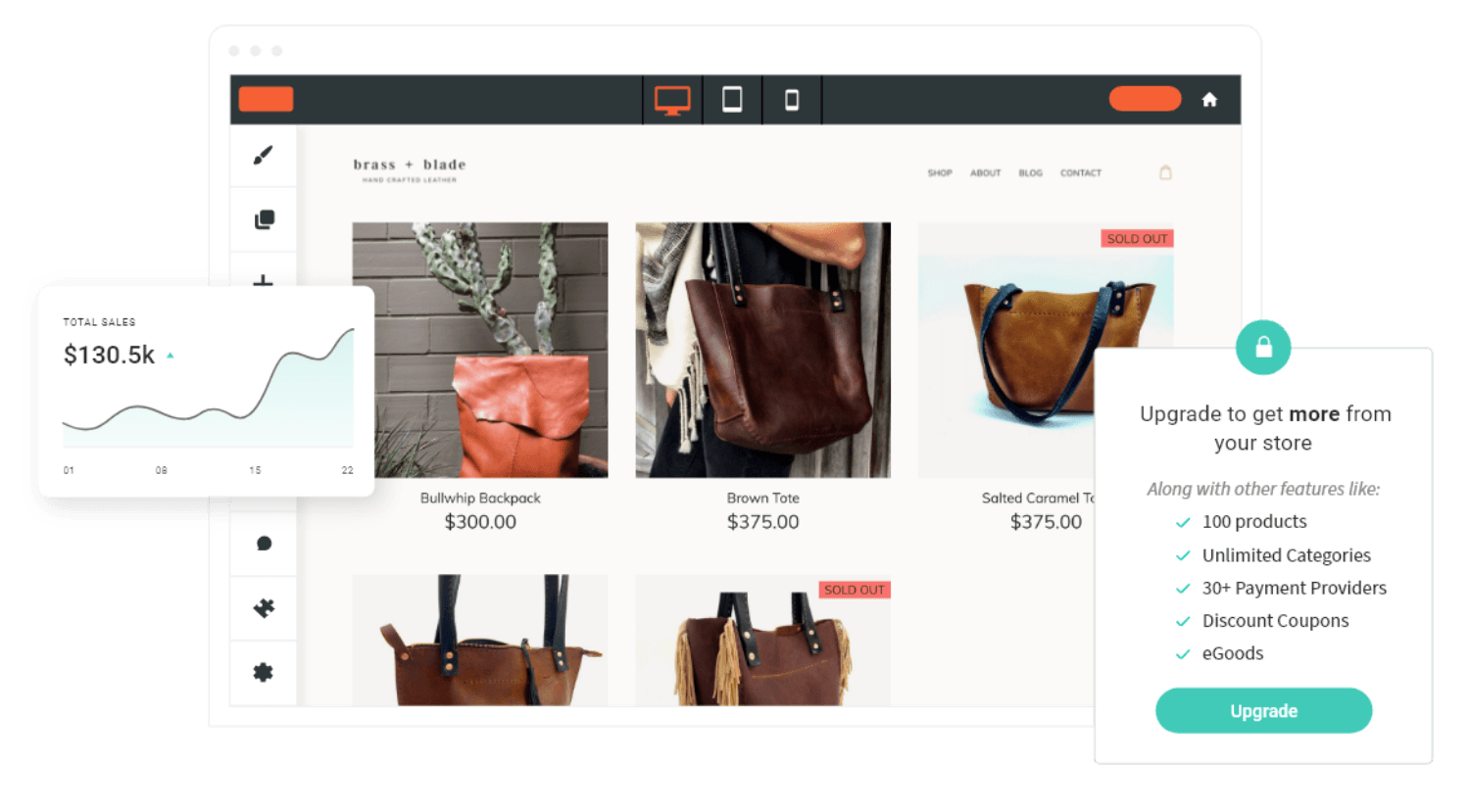As you may have heard, we have finalized the acquisition of Snipcart, an eCommerce solution that allows online businesses to add a fully functional shopping cart to any website. The work to integrate the two platforms has already begun and is expected to be completed early next year.
This acquisition means that Duda will soon be able offer improved
eCommerce solutions to web professionals, digital agencies and SaaS platforms who serve SMB clients. To help understand insights into the details of the acquisition from a more personal perspective, we sat Duda’s Itai Sadan and Snipcart’s Francois Lanthier Nadeau in the CEO hot seat.
We’ll discuss how the acquisition reflects what the overall process entailed for both teams, the new platform capabilities being developed post-purchase, and how the acquisition reflects major ongoing eCommerce trends.
What The Process Entailed For The Teams Involved
The move to
acquire Snipcart was a top priority for us and happened in the midst of tremendous growth for the company. According to Sadan, this move was conducted because Duda’s team recognized that the existing eCommerce solution was not flexible or modular enough to satisfy our existing customer needs.
Snipcart's experienced team of developers has built a reputation
for providing flexible, modern cart designs. In acquiring Snipcart, we have not just gained superior technology to help our customers scale their online businesses even faster, but we’ve also brought in a team of industry leaders who understand the ins-and-outs of eCommerce integration.
Both of these factors mean that Duda is now in an even stronger position to offer advanced shopping cart capabilities to customers in an era where the eCommerce market is
expected
to expand to $6.3 trillion within the next three years.
“The growth we have seen in the eCommerce market is driven by the global pandemic causing a shift from offline to online sales,” says Sadan. “Duda has also seen the demand for its existing eCommerce product increasing.”
This should come as no surprise when you consider that Duda has seen a massive 256% increase in the number of eCommerce sites built with its platform. To date, over 14,000,000 websites have been built with Duda.
As to why Duda decided to go with Snipcart, Sadan elaborated: “we wanted to provide a more beautiful and modern shopping experience. The options we had were either to build it ourselves, which would have taken a long time, or shorten the path by acquiring a company that has already built what we were looking for.”
And as to why Snipcart decided to sell to Duda rather than scale themselves up independently, Lanthier Nadeau says it came down to realizing they had the opportunity to get its platform into the hands of many more users with a company that shared their values and would make integration a feasible challenge.
“After a couple of exchanges between teams, we knew where we stood,”
said Lanthier Nadeau.
“Both sides had mature tech stacks, and knew what would need refactoring, new features, or both. The integration would come with some challenges, but nothing excessive.”
Lanthier Lanthier Nadeau also recognized that Snipcart becoming a part of Duda versus scaling on its own would actually enable the company to develop its platform even further, leading to a “net positive” for the careers of Snipcart’s team members.
Joining Duda would also “accelerate the development of some key features we had wanted to ship for a long time,” Lanthier Nadeau said, while adding, “We’d get to scale our systems to handle transaction volumes orders of magnitude higher than our current ones.”
Duda conducted a very thorough research of the ecommerce platform market. We had conversations with the teams of multiple organizations before realizing that Snipcart would be the perfect fit for what Duda and its customers needed.
“What we liked about Snipcart was that with a relatively small and talented team they had built a state-of-the-art eCommerce platform used by thousands of customers worldwide,”
says Sadan. “Their focus on flexibility and modern eCommerce store design is very much aligned with Duda’s product vision of providing its customers with beautiful and modular eCommerce solutions.”
This was Duda’s first acquisition, and a new experience for Sadan. The acquisition was made more difficult due to problems compounded by the pandemic.
“I have raised a lot of money from investors which had its similarities, but buying a company was a whole different ball game,”
says Sadan. “In addition, we had to do it all remotely due to the Covid Pandemic which made it even more difficult. It was roughly four months of discussions and another two months of due diligence.”
In the end though, it’s clear that the trials of the negotiations were well worth it, the teams are now heads down working on the integration between the two platforms with great progress being made thanks to their collaboration. Both teams have no doubt that once integration will be completed customers will greatly benefit from the joint solution.
Post-Purchase Platform Capabilities
The burning question is how Duda’s platform capabilities will expand and become more aligned with the needs of our customers and the future direction of eCommerce, as a result of this move.
Already, Duda has established itself as one of the foremost website builders on the market today. Our platform lowers the average website build time by 50% to 75%, making it one of the fastest web builders available.
Much faster build times became a standard for duda’s clients thanks to the platform’s low-code/no-code capabilities and automated side building features, amongst other dynamic features. Once Snipcart’s technology is fully integrated into duda’s platform, site users will be able to access more features that they’ve always wanted.
What are some of these features?
“I think the main one is that Snipcart makes it very easy to make any content shoppable and this will allow Duda to offer a very flexible eCommerce solution,”
says duda’s CTO Amir Glatt. “We will be able to offer both the classic eCommerce catalog side by side with other scenarios such as charge a subscription to access site content, the ability to integrate payments to custom widget built in our widget builder such as a custom form that accepts payments or make any external inventory shoppable via Duda’s storefront. Another thing which our customers will love is the ability to customize the shopping cart and add new components to it.”
But it’s not just Duda’s customers who will benefit from the merger. Snipcart’s customers stand to gain equally as well. According to Lanthier Nadeau, “Having Duda's support and resources will help us scale the dev team, and increase velocity for Snipcart's core product.”
As a result of integrating into Duda, Snipcart customers will now have access to new features that include:
- Shipping fulfillment integrations
- Improved marketplace support
- Improved social selling support
- User-friendly store customization tools
- Client collaboration and billing tools
- A faster site editor
- White labelling of CMS functions
A Strategic Move Reflecting Major ecommerce Trends
With the above features in mind, it can be said that arguably the biggest benefit the Duda and Snipcart integration will provide everyday small business owners is the ability to gain more control over their online stores versus ceding much of that control to third parties.
“Meaning businesses serious about online commerce will realize that depending too much on third party channels and platforms can pose a significant risk,” Lanthier Nadeau points out. “If all of your eCommerce traffic comes from Instagram or Facebook, you're always at the mercy of their algo updates or ad price hikes. Same thing with Google updates if you're relying purely on paid or organic traffic. I think all of the above are great channels to generate traction at the margins of your business, but you really want to push people towards channels you have complete control over and don’t need to pay in order to interact with them: your website, your email subscribers, your store, and your contact list.”
Lanthier Nadeau argues that this reflects an overarching trend of ‘decentralization and automation’ in the digital economy. SMB owners in particular have been put on their toes as a result of the pandemic, since record numbers of physical stores have been closed and digital sales channels have subsequently become even more important. For some of these SMB owners, turning to eCommerce has now become their primary source of income when before they had not yet fully invested into eCommerce platforms as much as they should have.
“Many other SMBs that had not yet invested in eCommerce scrambled to go transactional online and catch up with competitors and unpaid bills,” Lanthier Nadeau says. “And sadly, that pandemic fear of things locking down again is here to stay for a few years.”
In other words, the current trend isn’t likely to go away. This bodes well for Duda and Snipcart. As has been discussed, Duda already offers some of the fastest web building times to its customers, who include web professionals, digital agencies and SaaS platforms who offer websites to SMBs. Thanks to the acquisition of Snipcart, it will now become an equally flexible eCommerce solution.
Duda’s acquisition of Snipcart represents one of the most significant moves in the eCommerce sphere. Duda plans to invest heavily into further developing the features of Snipcart’s platform and providing the Snipcart team with all the resources they need. It’s worth noting, however, that the Snipcart platform will continue to be offered independently to customers.
For Duda’s and Snipcart’s customer base, the acquisition means gaining greater control over and having a much easier time building eCommerce stores. And at the same time, making the duda platform a more appealing choice to those individuals and companies who build sites for SMBs.








